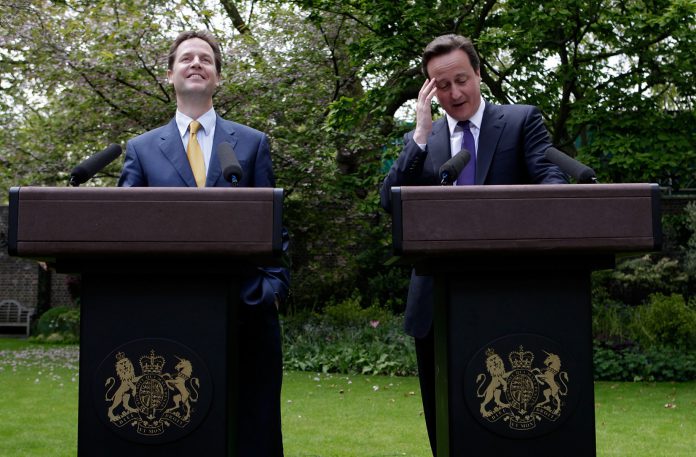A POWER-sharing government is almost always a last resort bid to avert crisis and avoid a fresh election.
The Conservatives and the Lib Dems 2010 pact was the first coalition since the end of the Second World War. Here’s what you need to know…
What is a coalition government?
An overall majority needed by political parties to win a General Election is 326 seats.
When a General Election results in no single political party winning an overall majority in the House of Commons, this is known as a “hung parliament”.
Parties may decide to join together temporarily in order to obtain a clear majority.
In what is known as a “confidence and supply” deal, a smaller party can agree to support its partner in budget bills and other cornerstone legislation but it is not a formal arrangement.
Northern Ireland’s DUP, which won ten seats in the 2017 snap election, entered into talks with the Conservatives to prop up Theresa May in government on this kind of deal.
A fullcoalition involves a definite pact between parties to form a majority.
A coalition government may also be formed during a national difficultysuch as a war or economic crisis.
What are the odds on a coalition government in 2019?
Bookmakers don’t appear to be staking much on a coalition government resulting from the December 12 poll.
New polling commissioned by the New Statesman shows that every possible coalition combination is deeply unpopular with voters.
The survey by GQR revealed all options had a net negative approval rating, with a coalition between the Conservatives and the Brexit Party the least unpopular among them.
However, Boris Johnson has already dismissed a partnership between the two.
When was the last coalition government in the UK?
The 2010 General Election in the UK failed to produce an overall majority.
The result on May, 6 2010 was the first hung parliament in 36 years, and the first full coalition since 1945.
It sparked a series of negotiations that ended in the forming of the first coalition since the Second World War.
The Conservatives, led by David Cameron, won the largest number of seats but fell short of the number required for an overall majority.
Senior figures from both Labour, who had lost power, and the Conservatives met with representatives from the Lib Dems, led by Nick Clegg, with the aim of forming a coalition government.
On May 12, 2010 a coalition deal between the Conservatives and the Lib Dems was signed.
While Cameron becamePrime Minister, Liberal Democrat leader Nick Clegg was appointed asDeputy Prime Minister.
Before 2010, coalition governments tend to be formed at times of national crisis – most prominently between 1931 and 1940.








